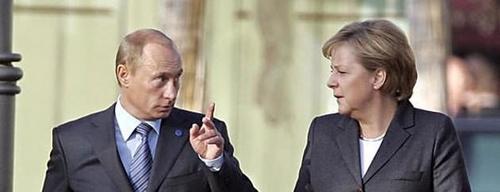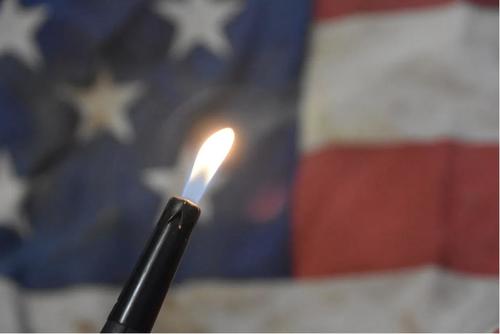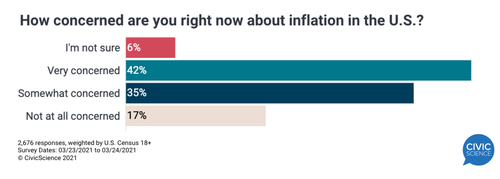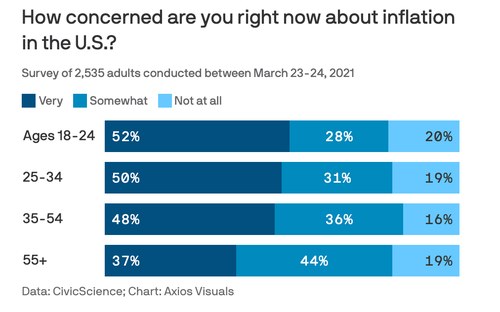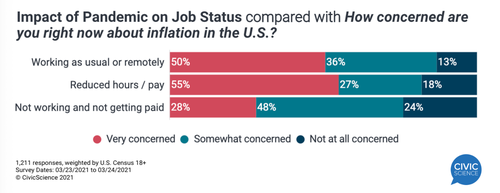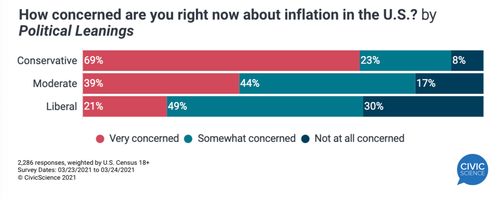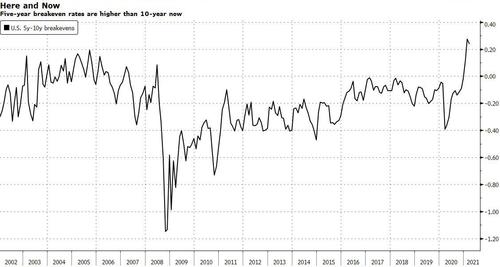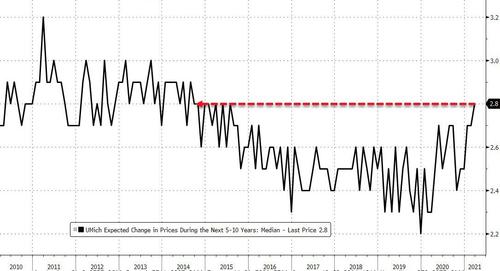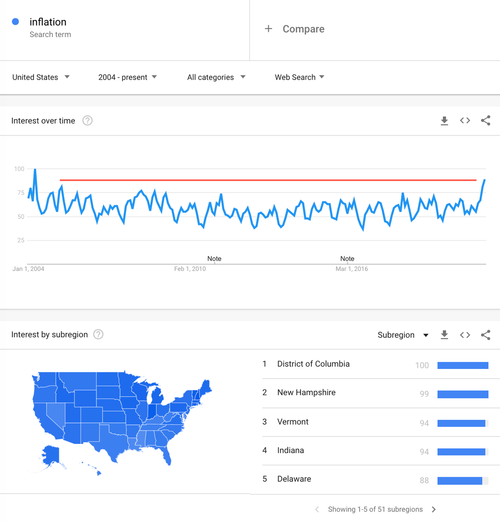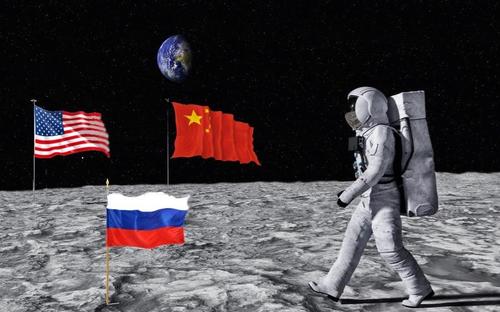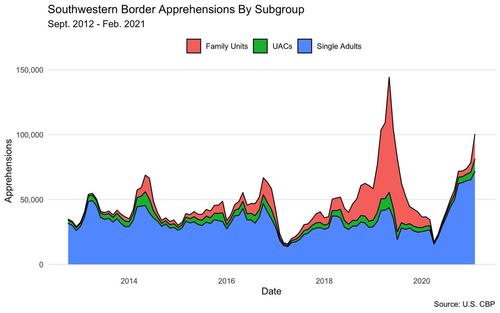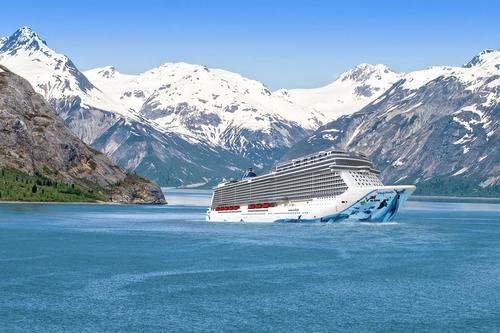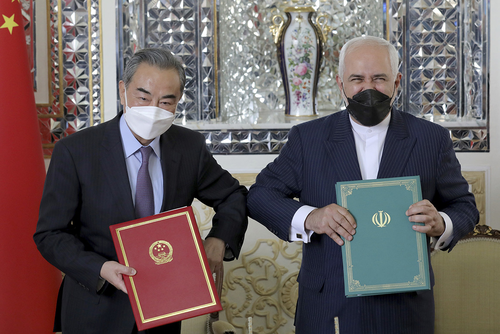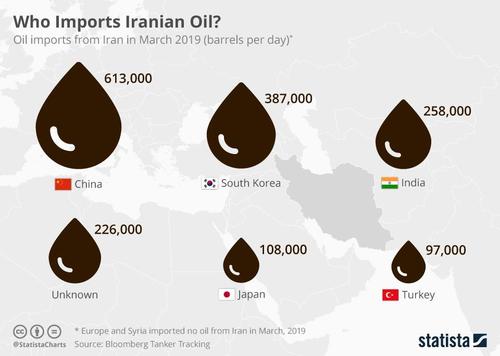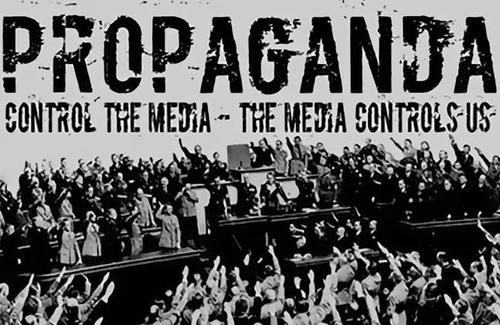The Brewing Conflict In Ukraine
Authored by Tom Luongo via Gold, Goats, ‘n Guns blog,
Enter The Putinator
When Biden called Russian President a soulless “killer” on ABC News, Putin responded with the most deft bit of diplomacy I’ve seen in quite a while, openly challenging Fungal Joe to a publicly broadcast debate of substantive issues, which Biden, of course, declined.
For those that don’t remember the context, here’s the article from Zerohedge on the subject.
There can be no question now that all the disparate interests within The Davos Crowd are aligned at this point (see this month’s Newsletter for more discussion on this). All guns point at Russia.
Putin tried to defuse the situation with an offer that was at once an epic troll of Biden, who is clearly no match for his Russian counterpart cognitively, and a warning to Americans that this situation has gotten far more dangerous than they are being told.
And sometimes you win simply by taking the high road. Make no mistake the fact that Putin went here this early in Biden’s presidency is a bad sign. It tells us things are horrific between the world’s most prominent nuclear powers and that there’s been zero diplomatic effort put forth by the Biden administration since the election.
The problem is rapidly becoming that indiscriminate use of all weapons all the time — diplomatic, economic, military, propaganda — creates a kind of dopamine addiction. In order to keep the public interest in the threat they have to keep raising the stakes and the rhetoric to eventually absurd levels.
As I like to say all the time, it’s the first rule of screenwriting : Be forever raising the stakes lest the audience gets bored.
But there comes a point where people begin to realize that they are being asked to back a war where the existential threat to the elite’s power is transferred onto them. Remember folks, government’s fight and spend billions propagandizing you into believing their wars are for your own good.
It’s rarely the case, if ever. More often than not the war being ginned up in the media and by government officials is one that either feathers their own nest directly, supports the goals of other powerful folks indirectly, or covers up past corruption.
The brewing conflict in Ukraine is all of these and more. The project to add Ukraine to NATO and the EU is a long-held dream of neocons like Victoria Nuland and neoliberals like Biden. It’s an important cog in the World Economic Forum’s desire to expand the EU to both encircle Russia thereby disrupting any dreams of Eurasian integration which could form a bulwark against their brave new world.
What’s got Biden’s Depends in a bunch is that he’s neck-deep in the corruption in Ukraine. In Obama’s own words, Ukraine is Joe’s project. And Ukrainian President Volodomyr Zelensky is not fully subsumed into the morass of Biden’s (and the rest of the usual suspects’) problems.
Putin’s deft and cordial handling of Biden’s indiscriminate use of language was masterful here. Biden’s initial remarks are, at best, him trying to hold onto the Amy Poehler demographic (see reruns of Parks and Recreation for her slavish obsession with him as Vice-President) as a vibrant, macho man, while he implements every bad idea that that same demographic rejected from all the other Democrats during primary season.
But we can all see he’s nothing of the sort. He’s a barely coherent, rapidly fading bully with no discernible achievements in life other than being available to be a placeholder for someone else’s plans.
So, it was never a question as to whether Biden would ever talk to Putin under those conditions. They can’t even get him to talk with reporters for real, having to green screen him into backgrounds to make it look like he’s out in the world, doing stuff.
And don’t get me started on that embarrassment of a press conference held the other day. Running for re-election in 2024? This guy’s not going to be alive in 2024. Then again, since he didn’t run in 2020, what does it actually matter?
Elections are just Hollywood productions anymore anyway.
Biden’s counter is to now invite Putin and Chinese Premier Xi Jinping the big Climate Summit in late April where the WEF controls the agenda and Biden’s anti-diplomatic corps led by the completely over-matched Secretary of State Antony Blinken can further embarrass the U.S. on the world stage.
Since both Putin and Xi told the WEF to go scratch on both Climate Change, Agenda 2030 and, most notably from Putin, the Fourth Industrial Revolution, I don’t see how this summit ends any better than virtual Davos did earlier this year.
In fact, with Biden’s approach to both China and Russia so far, this summit is shaping up to be a colossal waste of time while also threatening everyone the world over with what they can expect policy-wise from the West until someone finally puts these insane people out of our misery.
With each day that passes the U.K., for example, under tyrant Boris Johnson sinks further into a complete totalitarian nightmare (see here, here, here, and here… from the last 24 hours) thanks to COVID-19, while ramping up the anti-Russian rhetoric to eleven.
But, back to Ukraine, because it’s tied directly to all this climate change nonsense. Putin understands as well that Biden will allow every escalation in Ukraine because he’s shackled by it and they need to complete the job started with the overthrow of Viktor Yanukovich in 2014.
That means we’ll see something far worse than Victoria Nuland’s latest Cookie Campaign for freedom. We’re going to see a war for the Donbass soon, likely right after Orthodox Easter and the end of the snow melt.
Putin tried to go directly to the people to end this destructive spiral to the bottom, because he knows where this ends.
It will be a confrontation that one side will have to commit to completely or allow it’s bluff to be called. The game Biden’s handlers have played to this point has been a massive escalation of rhetoric while continually moving real pieces into position for a real conflict. I just don’t see cooler heads prevailing here because there is no upside for the U.S., the EU and the WEF if China and Russia stand their ground and Biden et.al. back down.
Russia has to be destroyed or subjugated if the Great Reset is to happen and Europe is to remain a relevant global player. That means control of the Black Sea, which means taking back Crimea. Russian Foreign Minister Sergei Lavrov recently reiterated publicly that Russia has had zero diplomatic contact with the European Union since the 2014 vote by Crimea to rejoin Russia.
Diplomacy is nearly over between the major powers. Biden’s simple refusal to talk to Putin publicly is a major event.
In the end everything we’ve lived through since COVID-19 began boils down to the need to destroy the global economy built on oil and coal, otherwise all major energy production stays under Eurasian control as it strengthens not Atlanticist as it peaks in global power and their grand dreams wither.
Time is getting short for this to happen. Public opposition to this program is rising. It happens now or not at all.
If there is a war in the Donbass this spring it won’t be a happy ending which extends U.S. primacy into the future but the moment when we realized its acceleration into irrelevancy.
* * *
Join my Patreon to access the notebook.
Donate
BTC: 3GSkAe8PhENyMWQb7orjtnJK9VX8mMf7Zf
BCH: qq9pvwq26d8fjfk0f6k5mmnn09vzkmeh3sffxd6ryt
ETH: 0x1dd2e6cddb02e3839700b33e9dd45859344c9edc
DCR: DsV2x4kJ4gWCPSpHmS4czbLz2fJNqms78oE
DASH: XjWQKXJuxYzaNV6WMC4zhuQ43uBw8mN4Va
XMR: 48Whbhyg8TNXiNV2LNkjeuJJU55CNt5m1XDtP3jWZK2xf5GNsbU2ZwHLDJTQ5oTU3uaJPN8oQooRpSQ2CPMJvX8pVTqthmu
Tyler Durden
Sun, 03/28/2021 – 07:00
via ZeroHedge News https://ift.tt/39iKJ7N Tyler Durden
